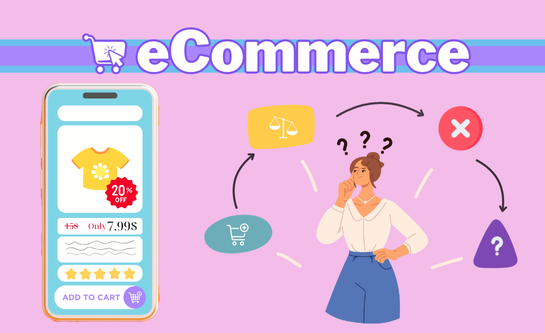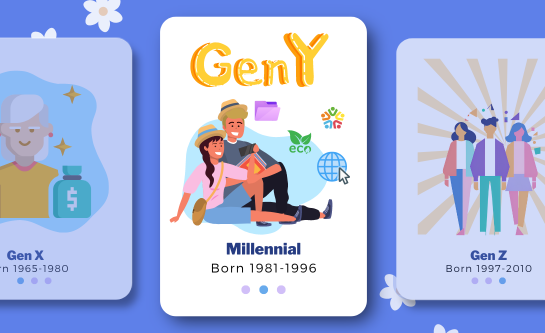Key Drivers in Consumer Decision-Making Process: Online vs Offline
 May 20th, 2024
May 20th, 2024
 656 views
4 MINS READ
656 views
4 MINS READ
The differences between online and offline purchases have become increasingly pronounced. Understanding the decision-making process behind these two shopping modes is crucial for firms aiming to optimize their marketing strategies. This article examines the differences between online and offline purchasing decisions and points out key drivers in shaping consumer behavior.
Online Shopping: the emerged model

The expansion of e-commerce platforms has revolutionized the retail landscape, offering consumers exceptional convenience and accessibility. With just a few clicks, shoppers can browse through numerous products, compare prices, read reviews, and purchase from their homes. The decision-making process for online purchases is characterized by its efficiency and convenience. In online shopping, consumers prioritize ease of navigation, fast delivery options, and secure payment gateways when making online buying decisions.
Convenience: A Key Driver of Online Purchases
One of the primary advantages of online shopping is the convenience. The ability to shop anytime, anywhere, without the regulations of physical store hours or geographical limitations, is a significant factor driving consumer preferences toward online platforms. The decision-making process for online purchases often revolves around maximizing convenience. Consumers seek out seamless user experiences, intuitive interfaces, and hassle-free checkout processes. Additionally, features like personalized recommendations and one-click ordering streamline the decision-making journey, reducing friction and enhancing satisfaction.
Reliability: Building Trust and Transparent in Online Transactions
Despite the convenience offered by online shopping, concerns regarding reliability and trustworthiness persist among consumers. Recent studies showed that 47% of online consumers abandon their carts due to hidden fees while 24% is due to the slow delivery time. The e-commerce reputation, the products’ authenticity, and delivery processes heavily influence online buying decisions. Plus, consumers highly value trust and transparency. Therefore, they seek for personal information security and the legitimacy of online transactions. Reviews, ratings, and testimonials play a crucial role in shaping perceptions of reliability, influencing purchasing decisions, and fostering trust between consumers and online retailers.
Interaction & Personalization and Privacy
While online shopping offers convenience and accessibility, it often lacks the interpersonal interaction and physical experience associated with traditional brick-and-mortar stores. The decision-making process for online purchases can be influenced by the level of interaction and personalization offered by e-commerce platforms. Features such as live chat support, virtual try-on tools, and personalized product recommendations seek to bridge the gap between online and offline shopping experiences, enhancing engagement and satisfaction. However, concerns regarding privacy and data security loom large, with consumers increasingly doubtful of invasive marketing practices and data breaches. Balancing the desire for personalized experiences with respect for privacy is essential for building consumer trust and loyalty in the online world.
Offline Shopping: The irreplaceable shopping mode

Despite the rapid rise of online shopping, traditional brick-and-mortar stores continue to play an essential role in the retail landscape. The decision-making process for offline purchases is characterized by the sensory experience of physically interacting with products, the immediacy of fulfillment, and the interpersonal interactions with sales staff and fellow shoppers. Offline shopping offers consumers the opportunity to see, touch, and try out products before making a purchase, providing a tactile experience that cannot be replicated online.
Tangibility: Engaging the Senses
Offline shopping appeals to consumers’ tactile senses, allowing them to physically interact with products and assess their quality, fit, and suitability. The decision-making process for offline purchases often involves sensory cues such as the feel of fabric, the scent of a perfume, or the sound of a musical instrument. In-store displays, product demonstrations, and interactive experiences captivate consumers’ attention, influencing their purchasing decisions and fostering emotional connections with brands and products.
Reliability: Leveraging In-Person Interactions and Expertise
Offline shopping offers the advantage of immediate assistance and personalized recommendations from knowledgeable sales staff. In detail, the opportunity for in-depth conversations, expert advice, and hands-on demonstrations enriched the decision-making process for offline purchases. Consumers value the human touch and seek reassurance from face-to-face interactions when making complex or high-value purchases. Establishing trust and rapport with customers through attentive service and tailored recommendations is crucial for offline retailers seeking to differentiate themselves in a competitive market landscape.
Interaction: Fostering Social Connection
Offline shopping provides consumers with the opportunity to engage in social interactions and communal experiences. The decision-making process for offline purchases is influenced by factors such as peer recommendations, social validation, and the sense of belonging fostered by physical retail spaces. In-store events, workshops, and community initiatives create opportunities for consumers to connect with like-minded individuals, share experiences, and form emotional attachments to brands and products. The sense of connection and belonging resulting from offline interactions adds value to the overall shopping experience, influencing consumer decisions and driving brand loyalty.
Conclusion
Numerous factors, including convenience, reliability, and interaction shape the decision-making processes of online and offline purchases. While online shopping offers convenience and accessibility, offline retail provides consumers with sensory, in-person interactions, and community sense. Businesses must understand the differences between the two shopping modes and tailor strategies accordingly to meet the evolving consumers’ preferences. By leveraging the strengths of both online and offline channels and prioritizing factors such as convenience, reliability, and interaction, retailers can enhance the overall shopping experience and build lasting relationships with their customers in an increasingly competitive marketplace.
 Back to blog page
Back to blog page











































